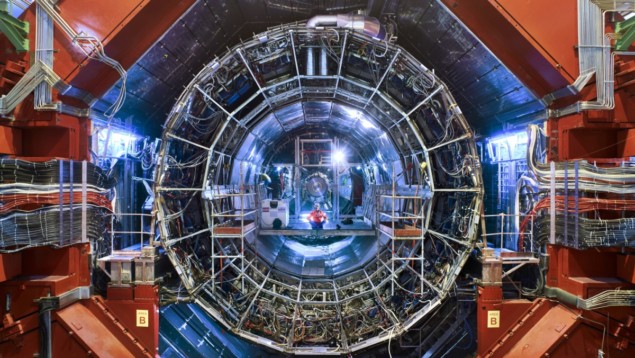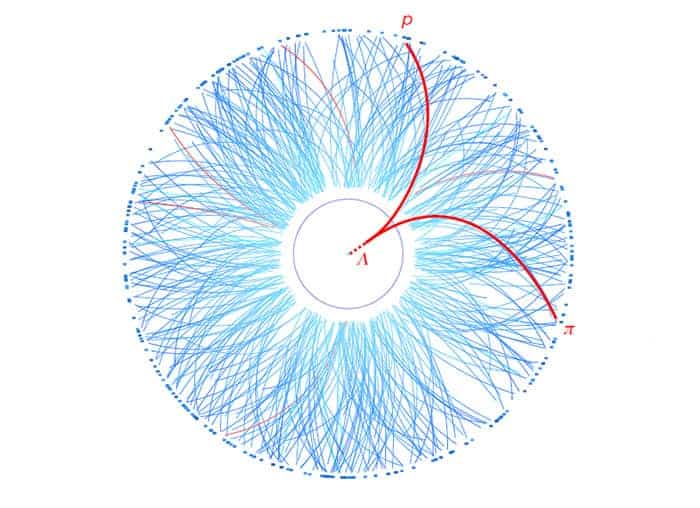
Collisions between high-energy protons at the Large Hadron Collider (LHC) at CERN have given physicists a first glimpse at interactions involving exotic particles called hyperons. Researchers working on the ALICE experiment on the LHC looked at how hyperons – which are baryons containing at least one strange quark – interact with protons via the strong force. Their results are an important step forward in our understanding of the strong force and could also provide insights into the incredibly dense matter within neutron stars.
Hadrons, including protons and neutrons, are particles comprising two or more quarks that are held together by the strong force. Interactions between hadrons are also moderated by the strong force – and most of our limited knowledge of how hadrons interact with each other comes from experimental studies involving protons and neutrons. Because of the nature of the strong force, these interactions are extremely difficult to predict theoretically – and gaining a better understanding of how hadrons interact is referred to as the “last frontier” of the Standard Model of particle physics.
Protons, neutrons and hyperons are all baryons that contain three quarks. While protons and neutrons comprise only up and down quarks, hyperons contain at least one strange quark. Therefore, studying how hyperons interact provides new insights into the strong force.
Hadron “sources”
In their study, the ALICE team looked at high-energy collisions between protons, which create “sources” of particles in the space surrounding the collision site. Here, quarks and gluons interact with each other to create new particles. Pairs of hyperons and protons are produced in sources before leaving and being detected by ALICE. By measuring correlations between the momenta of the proton and hyperon in a detected pair, physicists can glean important information about how they interacted when close together in the source.

Quark–gluon plasmas rotate at record speed
In such high-energy conditions, these interactions can be predicted to a limited extent by modelling the behaviour of quarks and gluons on a discrete spacetime lattice. As the team hoped, these predictions almost perfectly matched up with their measurements.
As well as providing important insight into how hadrons interact, the study could also boost our understanding of neutron stars. That is because astrophysicists believe that hyperons could exist in the extremely dense cores of these objects. Further studies of hyperon interactions at ALICE – as well as future facilities in Russia, Japan and Germany, could lead to a better understanding of the physical processes underlying neutron stars and also neutron-star mergers.
The research is described in Nature.



